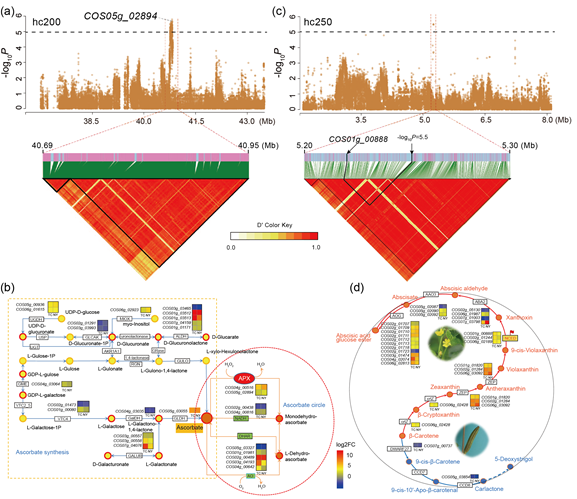
Jute (Corchorus sp.), an annual herb, is the most important bast fiber crop. It is the second largest natural fiber crop in the world, second only to cotton (Gossypium sp.), and jute fiber accounts for 80% of the global bast fiber. For its broad-spectrum of applications, the demand for jute is increasing worldwide, but research on jute at the molecular level is scarce, which makes the genetic improvement of jute limited.
Recently, researchers in the Institute of Bast Fiber Crops, Chinese Academy of Agricultural Sciences(IBFC,CAAS),together with scientists of Nanyang Technological University, National University of Singapore and Novogene Bioinformatics Institute, revealed the genetic mechanism of salt tolerance, domestication and genetic improvement of jute using multi-omics technology.
Researchers assembled a newly improved genome of a salt-tolerant variety ofC.olitorius (TC; TC008-41, Zhonghuangma No. 15) via a combination of techniques that produced paired-end (PE) sequences, Nanopore long reads and 10X Genomics (10XG) sequencing data. They discovered that expanded gene family enriched in the five nucleotide repair-related pathways and the oxidation-reduction process. These results implied that the expanded gene family enhanced the important processes whichwere associated with resistance to abiotic stress by rapid DNA repair and scavenging reactive oxygen species (ROS) in jute.
Researchers performed GWAS and multi-omics analysis by integrating de novo sequencing, resequencing, and transcriptomic and epigenetic sequencing, to clarify the domestication and improvement of dark juteC.olitorius. Researchers characterized the selective sweeps in the two breeding stages of jute, prominently, soil salinity differences played an important role in environmental adaptation during domestication. Two upregulated genes identified by GWAS (COS05g_02894 and COS04g_00516) belonged to the L-ascorbate peroxidase (APX) gene family, and a monodehydroascorbate reductase ortholog, COS04g_00816, was regulated in the multi-omics data (i.e., the transcriptome, DNA methylation, and m6A data). They are all involved in the ascorbate metabolic pathway, which includes critical pathways for scavenging ROS. Enzymes that are involved in the ascorbate cycle are inhibited in plants under abiotic stress, resulting in H2O2 accumulation and inhibition of growth and yield. As the first enzyme of the ascorbate cycle, APX could convert H2O2 generated by the detoxification of superoxide radicals to H2O and O2, after which ascorbate is oxidized to monodehydroascorbate. Researchers speculated that this metabolic pathway scavenges ROS through the ascorbate cycle and promotes osmoregulation and the efficient use of water, thereby potentially improving the salt tolerance of jute.
The research was supported by the Science and Technology Innovation Project of the CAAS(CAAS-ASTIP-2017-IBFC001) and the National Natural Science Foundation of China(31601351).The study entitled “Multi-omics provides new insights into the domestication and improvement of dark jute (Corchorus olitorius)” has been published online inThe Plant Journal and can be accessed through the following link https://onlinelibrary.wiley.com/doi/10.1111/tpj.15983.

Figure. A GWAS of salt tolerance and the genes underlying the ascorbate metabolisms and
the abscisic acid (ABA) biosynthesis pathway in jute

